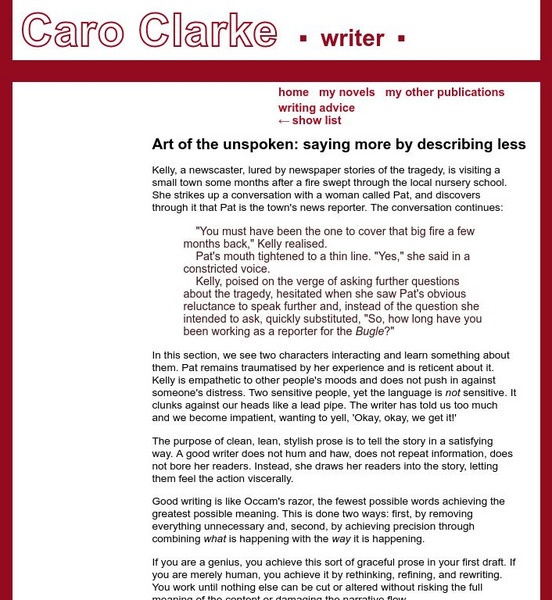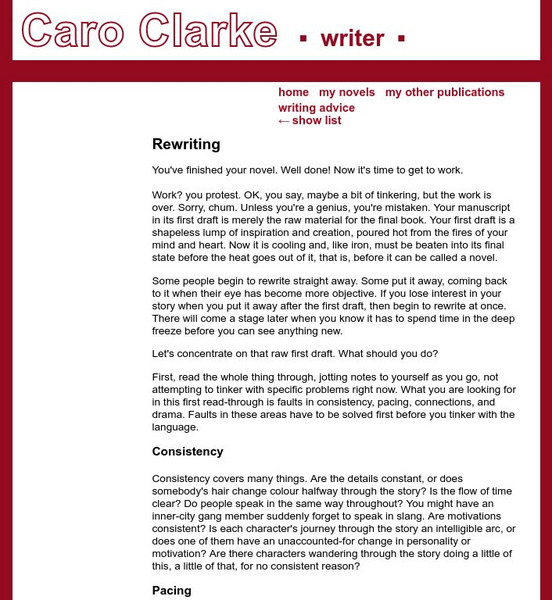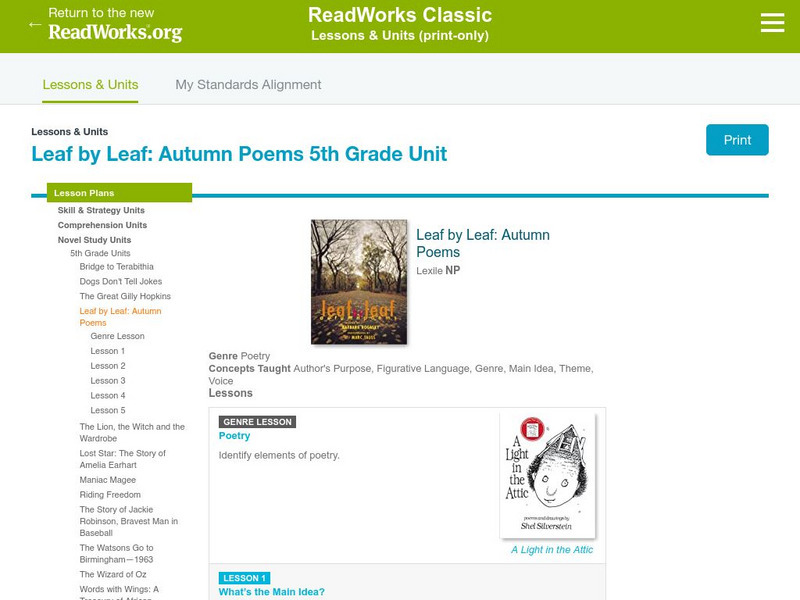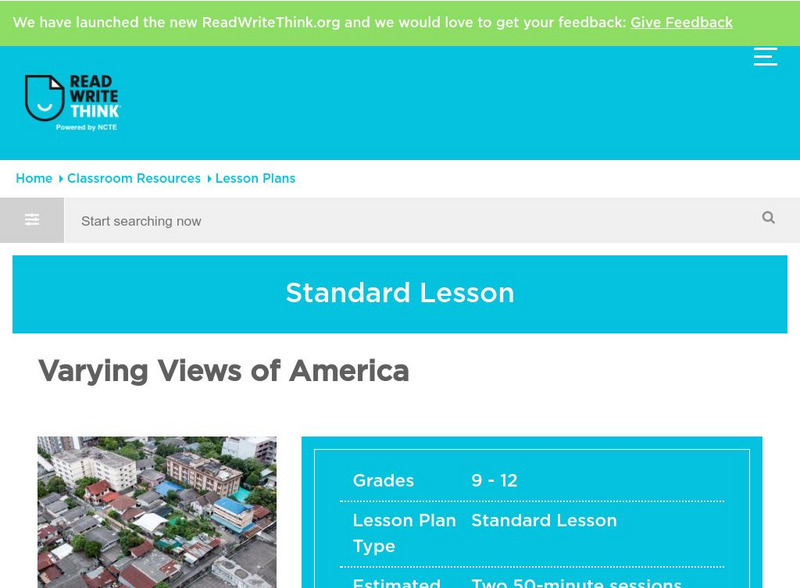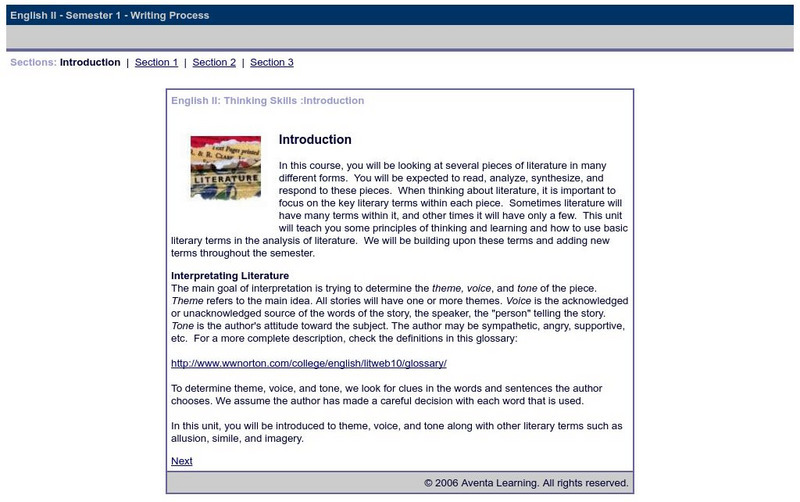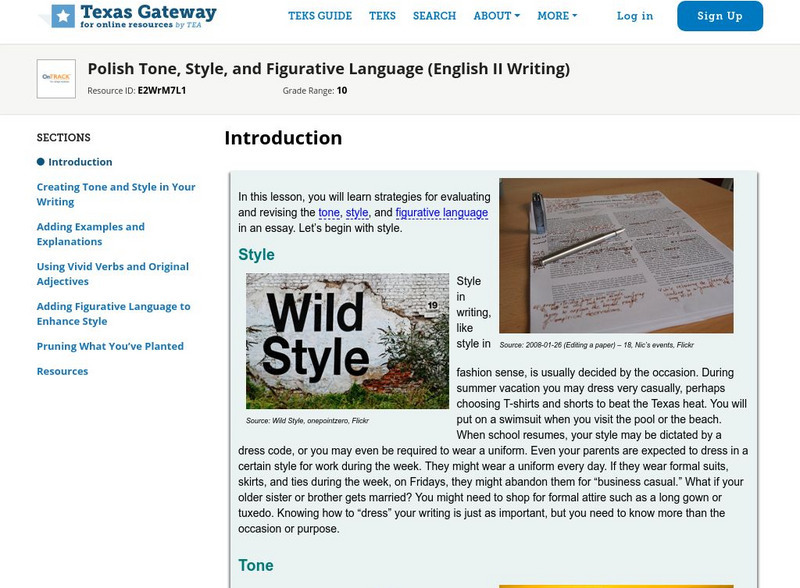OpenStax
Open Stax: Catherine Schmidt Jones: Pitch Sharp, Flat and Natural Notes
Learn about the meanings and uses of pitch and accidentals. Including sharp, flat, natural and double sharps and flats, this lesson explains why they are necessary.
Caro Clarke
The Art of the Unspoken: Saying More by Describing Less
This is the thirteenth article in a series that was developed to help the new novel author. This article focuses on how good descriptions aren't necessarily connected with a lot of words, good descriptions are clean and to the point.
Caro Clarke
Rewriting
This is the 17th article in a series that helps the new fiction author with the final step--revision.
Read Works
Read Works: Germs Go to School
[Free Registration/Login Required] An informational text about harmful germs found on surfaces in schools. A question sheet is available to help students build skills in reading comprehension.
Sophia Learning
Sophia: Colons and Dashes
A set of two cartoon videos. The first [5:08] explains colons and how they can be used properly in sentences. The second [3:42] introducing dashes, their usage, and how they can be used to create tone.
Sophia Learning
Sophia: Evaluating the Connotation
This lesson focuses on evaluating the connotation of a vocabulary word. It defines connotation and gives an example. It details three steps: read the word in context, determine the tone of the overall reading, and compare the tone with...
Read Works
Read Works: Voice 3rd Grade Unit
[Free Registration/Login Required] A series of two lesson plans designed to teach students to recognize words and phrases that support the author's voice in poetry. Lessons are based on the books Where the Sidewalk Ends by Shel...
Read Works
Read Works: Fifth Grade: Five Lesson Unit: Leaf by Leaf: Autumn Poems
[Free Registration/Login Required] A five lesson plan poetry unit focusing on main idea, tone, theme, author's purpose, and figurative language in poetry. Texts must be provided by the teacher, but handouts that go along with the lesson...
ReadWriteThink
Read Write Think: Poetry: Varying Views of America
Lesson allows young scholars to examine the various views of American perspective through studying three poems by diverse poets: "I Hear America Singing" by Walt Whitman, "I, Too, Sing America" by Langston Hughes, and "On the Pulse of...
Sophia Learning
Sophia: Writing for an Audience
A seven-slide presentation discussing the importance of writing to an audience in order to establish tone, strengthen word choice, and determine what supporting details to include.
Capital Community College Foundation
Guide to Grammar and Writing: Tone: A Matter of Attitude
This site focuses on tone and audience with examples.
Texas Education Agency
Texas Gateway: Close Reading of Prose: Practice 1 (English I Reading)
Read carefully in order to identify diction, tone, and irony and evaluate their impact on the meaning of a text.
Texas Education Agency
Texas Gateway: Diction and Tone (English I Reading)
Evaluate the diction in a text and discover the author's tone.
Texas Education Agency
Texas Gateway: Diction and Tone (English Ii Reading)
Evaluate the role of diction and tone in literary nonfiction such as speeches, essays, and other forms.
Texas Education Agency
Texas Gateway: Evaluate Tone in Various Media for Different Audiences/purposes
Explain how the tone of a message varies according to audience and purpose.
Texas Education Agency
Texas Gateway: Evaluate Tone in Various Media for Different Audiences and Purpose
[Accessible by TX Educators. Free Registration/Login Required] Explain how the tone of a message varies according to audience and purpose.
Shmoop University
Shmoop: Julius Caesar Analysis: Literary Devices in Julius Caesar
A discussion of the literary devices used by Shakespeare in The Tragedy of Julius Caesar. Each device is linked to additional pages with more detailed information and examples.
Lumen Learning
Lumen: Writing Skills: Tone, Language, and Appeal
This lesson focuses on using tone, language, and appeal to recognize and evaluate rhetorical approaches to building common ground. RI.9-10.4 word meanings/impact of choice
Texas Education Agency
Texas Gateway: Polish Tone, Style, and Figurative Language (English Ii Writing)
In this lesson, students will learn strategies for evaluating and revising the tone, style, and figurative language in an essay.
Department of Defense
Do Dea: Thinking Skills
In this self-guided course, you will be looking at several pieces of literature in many different forms. This unit will teach you some principles of thinking and learning and how to use basic literary terms in the analysis of literature....
Texas Education Agency
Texas Gateway: Close Reading of Prose: Practice 1 (English I Reading)
In this lesson, students practice close reading strategies to help them understand a writer's tone. They will examine the writer's choice of diction, details, and irony to identify the writer's attitude.
CommonLit
Common Lit: At a Window by Carl Sandburg
Carl Sandburg (1878-1967) was an American poet and writer who won three Pulitzer Prizes in his lifetime. His work is known for the way it plays tribute to the common man. "At A Window" was published in Poetry in 1914. As you read, make...
Ohio University
Ohio.edu: Point of View and Narrative Voice
This is an article defining point of view, explaining the types of point of view, and discussing voice and tone. It was originally published at http://teenwriting.about.com/library/weekly/aa111102e.htm.
Texas Education Agency
Texas Gateway: Polish Tone, Style, and Figurative Language
[Accessible by TX Educators. Free Registration/Login Required] In this lesson, you will learn strategies for evaluating and revising the tone, style, and figurative language in an essay. It also includes practice exercises.



